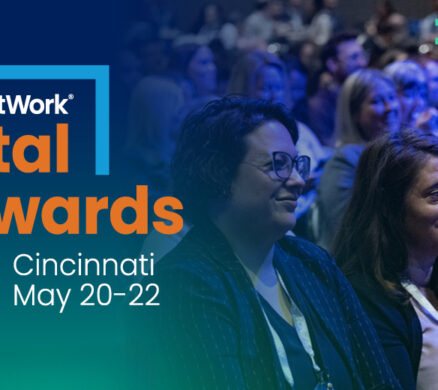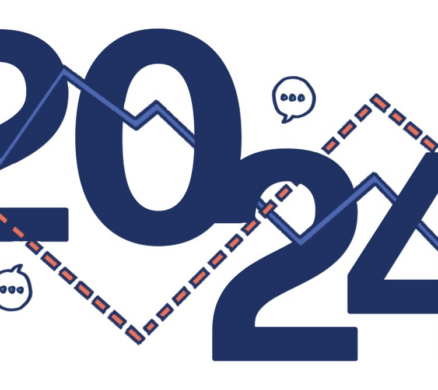
This is the fourth installment of our ‘Building Your Digital Landscape’ series about the best practices you can use to construct a strong digital presence. If you’re catching up, you can check out our Digital Marketing Acronym Reference Guide, Head into Header Tags for SEO or Five Truths for Finding Your Social Space.
Social media is as much a part of our culture as television and radio are. 97% of Fortune 500 companies use social media, but approximately 40% of small businesses have yet to jump into the social media realm. Where does your organization land? Where should your organization land?
To answer these questions, let’s get back to the basics of marketing and communications.
Who is your social media audience?
Every one of us has an audience. Educators have students, retailers have customers, logistics companies have business clients, doctors have patients, etc. We want our audience’s attention (preferably their whole attention!) for our message. In some cases, that message is exactly what they want to hear; and we deliver it in the way and time they are most receptive. But most of the time, we contend with such a diluted mix of attention that it takes a concerted effort on our part to make that message stand out.
In 2020, Americans spent more than 1,300 hours on social media. That 1,300 hours translates to 54 days or nearly two months’ worth of time. Take a look at your household: how do your kids, partner and you spend time on social?
Facebook is still an absolute behemoth with more than 2.85 billion monthly active users. YouTube isn’t far behind with 2.29 billion active monthly users. Advertisers are aware of this and are buying attention via social ads. In the U.S., social media ad spend is predicted to increase by 21.3% to $49 billion in 2021 alone. But what if you’re just looking to build your presence on social and aren’t ready to commit to any ad spend?
Determining where to put your time in the social landscape really goes back to your audience.
Where is your audience most likely spending time on social? Are they YouTube fanatics consuming hours upon hours of videos every week? Are they scrolling through LinkedIn, reading articles or joining webinars? Or are they exploring their long-dormant dance abilities on TikTok?
Pew Research has been collecting data on social media usage since 2005, and its research is a good place to start learning about where your audience is most likely spending their time. Knowing the demographics of your audience (or ideal audience) and comparing that to data collection can point you to the platform or platforms that would make the most sense for your particular audience.
What is appropriate content for your audience?
Developing a smart presence on your platform of choice means spending time developing appropriate content for the platform.
For instance, if you’ve determined that Instagram is where the bulk of your audience is — that will take a very different content strategy than LinkedIn. Instagram is enormously visual. An account that just re-purposes a brochure with text-heavy graphics is likely to find themselves shouting into a void with no audience members. Likewise, if LinkedIn is the platform of choice and all you post is artistically developed photographs with pithy content, you’ll likely be shouting into the void yet again.
Take the time to research your platform. What holds the audience’s attention? What is shared, commented on, what drives action? Take that information and develop a content calendar. Invest in a tool that allows you to schedule content and stay on top of audience interactions. Social media is still social for all of its nuances. If your audience begins to interact with your content, you absolutely must respond and be interactive.
Don’t underestimate the power of social.
If it seems like jumping into social media wisely sounds like a fair amount of work — you’re obviously paying attention. It is! No longer is social media the thing companies toss to interns and forget about. This is a space where brands are interacting on a very one-to-one level with their customers. That responsibility should go to a time-invested employee or team or outsourced to a well-versed agency who you trust to speak for your brand. The data does indicate that doing this pays off:
- 200 million Instagram users visit a business profile at least daily.
- On Facebook, 66% of users visit a local business page weekly.
- 70% of viewers bought from a brand after seeing it on YouTube.
- 33% of B2B decision-makers use LinkedIn to research purchases.
But remember, it’s quality over quantity. Focus on those one or two social platforms. Learn the lingo, know the strategy and become a part of that platform’s overall community so your content makes sense. (Catch up on how you should pick your platforms in our blog post, Five Truths for Finding Your Social Space.)
How do you know your hard work on social media is paying off?
Much of your ROI may boil down to your particular business and objectives for using social media. If you’re retail — sales are your ultimate goal, so driving store traffic or online sales is a clear key performance indicator and would be your “conversion” data.
If you’re in B2B, perhaps a larger lead pool is what you’re after. More phone calls or email inquiries are the conversion analytics indicating your efforts are making headway.
When we look at additional social media analytics: engagements (likes, comments, shares) are great indicators of whether or not your content is resonating. Growth rate shows you’re worth a follow or that your content is worth keeping up with (obviously a good indication you’re on the right track with your audience).
If this information both excites and scares you a little, we get it. We’ve been there. Let’s have a conversation on how to get started or clean up your social space and move your efforts to achieving your business objectives.





